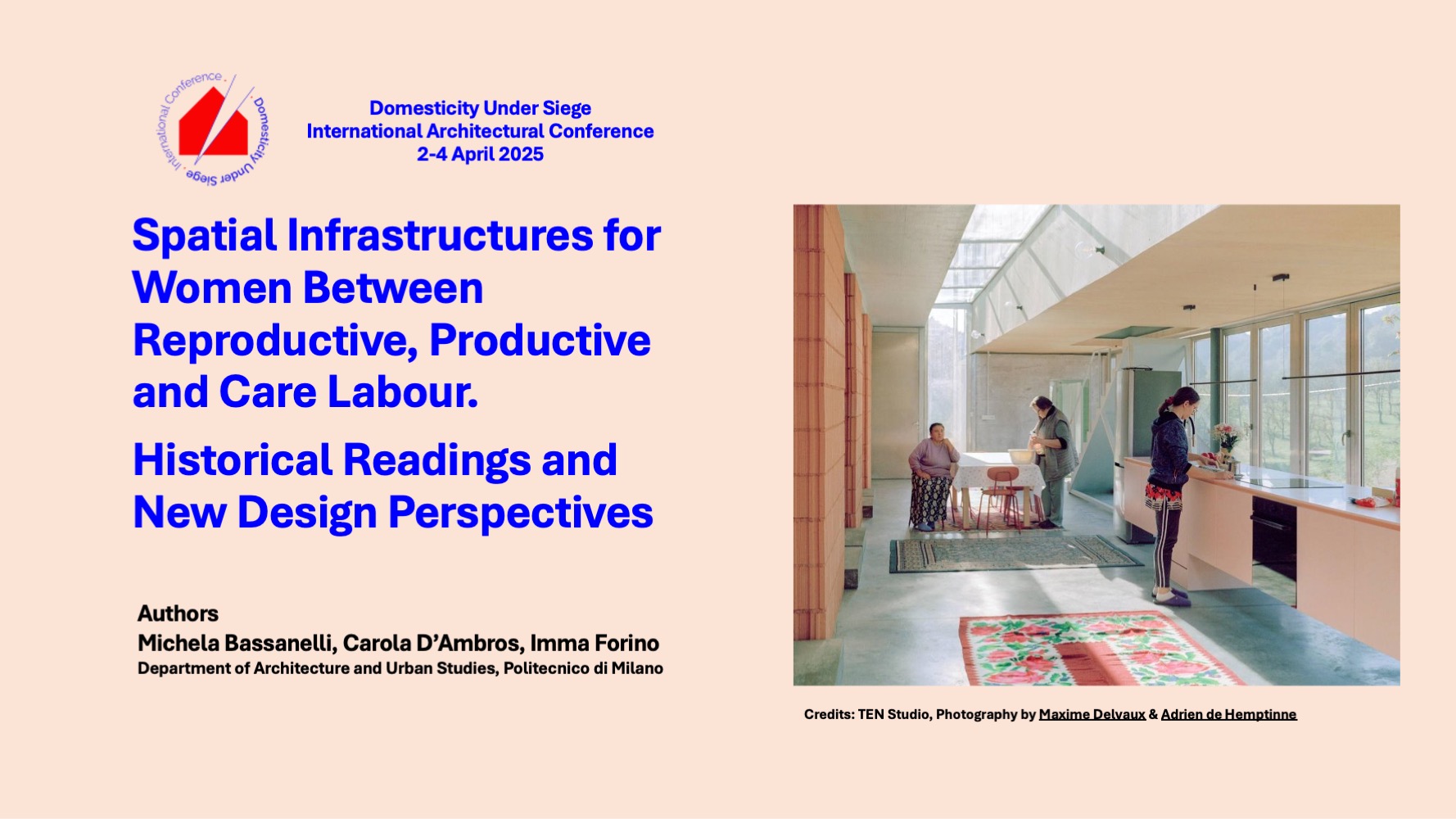The shifting dichotomy between productive and reproductive labour, which has been at the centre of feminist and transfeminist debate since the middle of Sixties (Mitchell, 1966; Benston, 1969, Morton, 1971; Federici, 1975), has generated a new wave of reflection produced by the effects of the Covid-19 pandemic (The Care Collective, 2020) when the home, once again, became a place of spatial overlap of different activity: work, sport, school, care.
The Fordist revolution split the productive and reproductive apparatus into well-defined spatial domains, on the one hand, the factory or the office, and on the other the home, considered the realm of the ‘full-time’ housewife. Towards the end of the 19th century and for much of the 20th , the home is the place where another capital is accumulated, linked to childcare, space maintenance and food preparation: “Far from being a pre-capitalist structure, the family, as we know it today in the West, is a creation of capital for capital’s sake; it is an institution that must guarantee the quantity and quality of labour-power, and its control” (Federici, 2020: 22).
The remote work, which was strongly experienced during the pandemic, brought these two forms of labour together in the domestic space with new effects on women and carers. The overlapping of production and reproduction (Palermo, 2022) has led to a spatial overlapping of different spheres of activity as well, transforming the home into a diverse workplace. What has occurred is nothing more than “a model of what women’s work has historically been. An inextricable continuum between productive activity and life” (Chisté, Del Re, Forti, 2020). If the emergency phase has shown the limits of the work and space overlap that has particularly affected women, it has, however, brought forth new possibilities for the design of places between the home and the street that can act as ‘social infrastructures’ through which to build and care for community (Forino, 2019, 2022).
Early examples of the externalisation of domestic tasks, in order to free women appeared at the beginning of the 20th century by several utopians, researchers and designers who rethought the home through the collectivisation of certain essential services for the family – such as cooking, washing and ironing laundry, managing household chores, looking after children. If these historical examples represent the identification of a field of architectural and social experimentation at the resolution of the combination of reproductive, productive and caring work, developed over time (Hayden, 1981), one of the challenges of contemporary design is to offer solutions that place care at the centre of an extended and integrated vision of the various stages of life.
The speech aims to bring together and present:
– examples, research and historical studies of experimental domestic projects for solving the combination of reproductive, productive and care work;
– contemporary architectural examples, research and studies working towards greater integration of women’s role in society and showing solutions for externalising domestic tasks to create social infrastructures aimed at increasing work-life balance and gender balance (e.g. communal services, collective kitchens, multigenerational spaces, etc.).
The presentation will be held on 3rd April, room 505, Elm House, Moulsecoomb Campus, School of Architecture Technology and Engineering, University of Brighton, section “Domestic Labour”.

